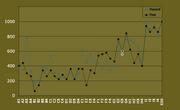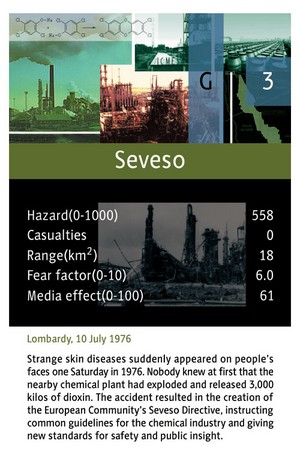|

On a Saturday afternoon in 1976, technical problems led to an explosion in the ICMESA chemical plant, which caused the release of a cloud of chemicals containing dioxin. This was a greatly feared chemical at the time because it was used in the Vietnam War.
About 3,000 kg of chemicals were released and carried by the wind, enshrouding the nearby communities. The accident was not immediately discovered, because there was no staff at the plant during the explosion.
A few hours later, children showed the first signs of exposure: burn-like skin lesions. The fear of exposure through meat and milk resulted in the slaughtering of 80,000 animals. Later that year a new dioxin-related skin disease was diagnosed, called �chlor-acne�, which shows as numerous cysts in the face of the victim and may cause anorexia and impotence.
The accident was particularly tragic, because it could easily have been prevented had the chemical reactor been encapsulated by a safety casing. Furthermore, the public and the municipal authorities had no insight whatsoever in the processes of the plant.
The accident sparked the establishment of the European Community�s Seveso Directive. Prior to the Seveso accident the European countries had no common guidelines for the chemical industry, but the Directive implemented new standards for safety and public insight.
Comment this page
 
Links and references:
About the Seveso Directive:
http://www.unu.edu/unupress/unupbooks/uu21le/uu21l...
New scientific results showing that risk of breast cancer increases:
http://www.ourstolenfuture.org/NewScience/human/ca...
Briefly about the accident:
http://www.getipm.com/articles/seveso-italy.htm
|

|
|



